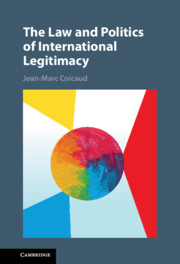Refine search
Actions for selected content:
201 results
Chapter 14 - Suárez on Time
- from Part V - Categories
-
-
- Book:
- Suárez's <i>Metaphysical Disputations</i>
- Published online:
- 13 October 2025
- Print publication:
- 30 October 2025, pp 257-276
-
- Chapter
- Export citation
Chapter 12 - Repetition as Thought Experiment
- from Part III - Kierkegaard and the Concept of Thought Experiment
-
- Book:
- Kierkegaard and the Structure of Imagination
- Published online:
- 26 September 2025
- Print publication:
- 16 October 2025, pp 193-213
-
- Chapter
- Export citation
8 - Semantic Fields: Material and Relational
-
- Book:
- Pattern, Construction, System
- Published online:
- 21 August 2025
- Print publication:
- 04 September 2025, pp 178-219
-
- Chapter
-
- You have access
- Open access
- HTML
- Export citation
27 - Leading and managing change
- from Part 5 - Drives Innovation
-
-
- Book:
- Leading and Managing Health Services
- Published online:
- 15 August 2025
- Print publication:
- 28 August 2025, pp 301-315
-
- Chapter
- Export citation
Investigating diachronic shifts within a domain of English modality: a study of collocates with well
-
- Journal:
- English Language & Linguistics , First View
- Published online by Cambridge University Press:
- 20 August 2025, pp. 1-22
-
- Article
-
- You have access
- Open access
- HTML
- Export citation
9 - Alternative Approaches in Law and Policy
-
- Book:
- Appearance, Disability and the Law
- Published online:
- 31 July 2025
- Print publication:
- 14 August 2025, pp 127-156
-
- Chapter
- Export citation
Classifying Asian party systems: Sartori’s typology in comparative perspective
-
- Journal:
- Italian Political Science Review / Rivista Italiana di Scienza Politica , First View
- Published online by Cambridge University Press:
- 08 August 2025, pp. 1-9
-
- Article
-
- You have access
- Open access
- HTML
- Export citation
7 - Agency amid Anxiety
-
- Book:
- Governing the Past
- Published online:
- 30 July 2025
- Print publication:
- 07 August 2025, pp 179-202
-
- Chapter
- Export citation
Emotional disorders among children and young people in England from 2004 to 2017: analysis of a probability sample survey series – ERRATUM
-
- Journal:
- The British Journal of Psychiatry , FirstView
- Published online by Cambridge University Press:
- 01 August 2025, p. 1
-
- Article
-
- You have access
- Open access
- HTML
- Export citation
1 - Towards a Theory of Transnational Religious Change
-
- Book:
- Christianity at the Crossroads
- Published online:
- 19 May 2025
- Print publication:
- 31 July 2025, pp 13-44
-
- Chapter
- Export citation
18 - Change in International Order and Legitimacy
- from Part V - International Legitimacy and Change
-
- Book:
- The Law and Politics of International Legitimacy
- Published online:
- 14 July 2025
- Print publication:
- 24 July 2025, pp 350-360
-
- Chapter
- Export citation
19 - Evaluation of the Validity of International Legitimacy
- from Part V - International Legitimacy and Change
-
- Book:
- The Law and Politics of International Legitimacy
- Published online:
- 14 July 2025
- Print publication:
- 24 July 2025, pp 361-370
-
- Chapter
- Export citation
17 - Change of International Order and Legitimacy
- from Part V - International Legitimacy and Change
-
- Book:
- The Law and Politics of International Legitimacy
- Published online:
- 14 July 2025
- Print publication:
- 24 July 2025, pp 318-349
-
- Chapter
- Export citation

The Law and Politics of International Legitimacy
-
- Published online:
- 14 July 2025
- Print publication:
- 24 July 2025
11 - The Acquisition of Irish Morphosyntax
- from Part IV - Acquisition of Morphology and Syntax
-
-
- Book:
- The Acquisition of Celtic Languages
- Published online:
- 03 July 2025
- Print publication:
- 10 July 2025, pp 213-233
-
- Chapter
- Export citation
Chapter 4 - Difference, change, and information
-
- Book:
- The Pattern of Change
- Published online:
- 17 June 2025
- Print publication:
- 03 July 2025, pp 53-80
-
- Chapter
- Export citation
Chapter 2 - The patterns of heaven
-
- Book:
- The Pattern of Change
- Published online:
- 17 June 2025
- Print publication:
- 03 July 2025, pp 16-34
-
- Chapter
- Export citation
Emotional disorders among children and young people in England from 2004 to 2017: analysis of a probability sample survey series
-
- Journal:
- The British Journal of Psychiatry , FirstView
- Published online by Cambridge University Press:
- 23 June 2025, pp. 1-7
-
- Article
-
- You have access
- Open access
- HTML
- Export citation
Chapter 4 - The First Way
-
- Book:
- Reading Aquinas's Five Ways
- Published online:
- 05 June 2025
- Print publication:
- 19 June 2025, pp 81-123
-
- Chapter
- Export citation
Chapter 5 - The Passivity of Perception and the Impassive Soul
-
- Book:
- Aristotle on the Nature and Causes of Perception
- Published online:
- 01 May 2025
- Print publication:
- 22 May 2025, pp 134-164
-
- Chapter
-
- You have access
- Open access
- HTML
- Export citation
